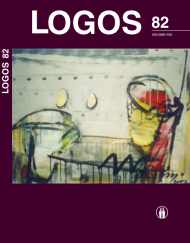Mirties Samprata Dvasinėje Lietuvių Kultūroje: Filosofinė Stebuklinių Pasakų Analizė
Conception of Death in Spiritual Lithuanian Culture: Philosophical Analysis of Fairy-Tales
Author(s): Aušra MalkevičiūtėSubject(s): Social Philosophy, Short Story, Existentialism, Cultural Anthropology / Ethnology, Hermeneutics, Ontology
Published by: Visuomeninė organizacija »LOGOS«
Keywords: nation’s spiritual culture; Lithuanian fairy-tales; death; (co-)existence; sacredness;
Summary/Abstract: The phenomenon of death is fundamental both in the cultural development of mankind (nation) and in a person’s life because it is a part of human existence. Death is related to a person’s physical and spiritual life and one’s efforts to keep them. That is the reason people are haunted by different kinds of fear: total vanishing, perversion of spiritual nature, pain of loss, moral suffering, and vacuity – that bring negative experience and thus force them to look for ways to overcome or escape it. Death has caused diverse experiences expressed through the symbols of spiritual culture of every nation. The analysis of fairy-tale stories reveals that symbols can be explained as external and internal factors associated to vanishing-deathnon-existence. The interpretation of symbols reveals the ways nations try to overcome such experience. The article is of value, not only from the historical-cultural and philosophical point of view, but also from existential-axiological one for those seeking the unity with the inner self and those trying to establish and preserve a notional relationship to the Lithuanian cultural tradition. The analysis of the article utilizes the basic attitudes of hermeneutical philosophy and psychoanalysis.
Journal: LOGOS - A Journal of Religion, Philosophy, Comparative Cultural Studies and Art
- Issue Year: 2015
- Issue No: 82
- Page Range: 55-67
- Page Count: 13
- Language: Lithuanian

